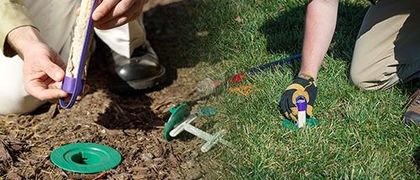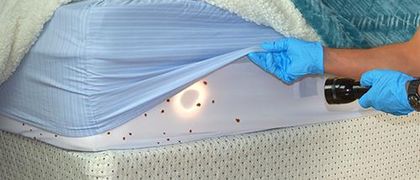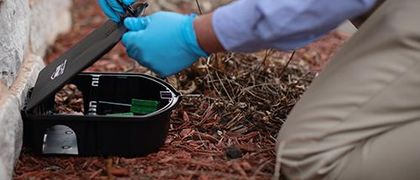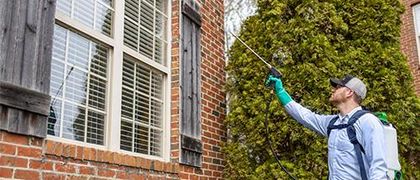What You Need to Know About Cicada Killer Wasps in Missouri
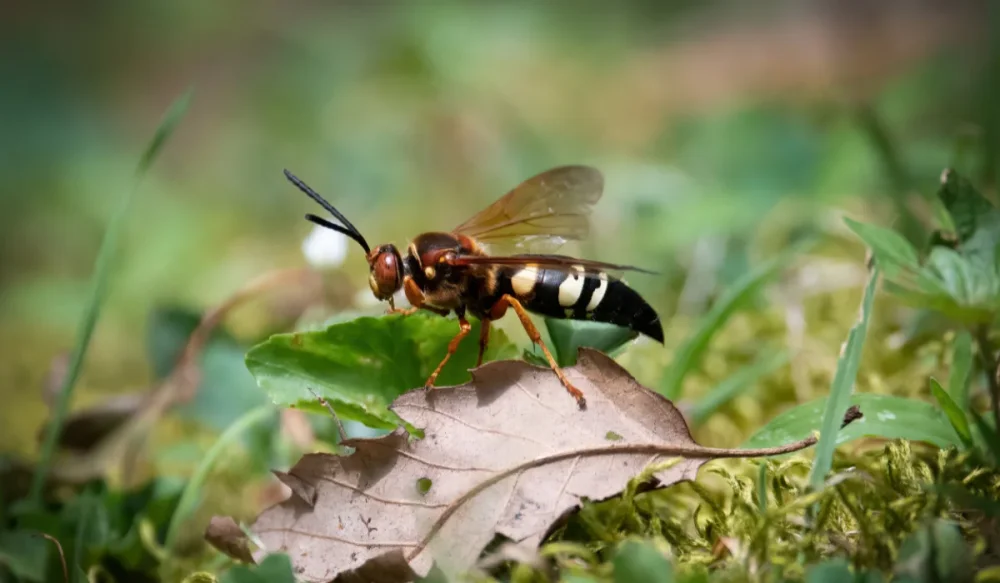
If you’ve seen a large wasp hovering around your flower beds or digging up your lawn, you’re not alone. Cicada killer wasps are active across Missouri in the summer, and while they look intimidating, they’re not out to hurt you. These solitary wasps are often mistaken for hornets or yellow jackets, but they’re a different kind of backyard guest.
Missouri homeowners often reach out when these big wasps start making burrows in the yard or buzzing around patios. Here's what you need to know about cicada killer wasps, how to identify them, and whether or not you should worry.
Key Takeaways
- Cicada killer wasps are solitary and rarely sting, even though they look threatening.
- Females dig burrows in loose, well-drained soil where they lay eggs on paralyzed cicadas.
- These wasps are common in Missouri and help naturally control cicada populations.
- If burrows are damaging your lawn or causing concern, local pest control pros can help.
What Is a Cicada Killer Wasp?
The eastern cicada-killer wasp (Sphecius speciosus) is one of the largest wasp species in North America. It’s easy to confuse them with hornets or even bumblebees due to their size and yellow markings. But they’re not aggressive, and they don’t swarm like social wasps.
Adult cicada killers emerge in mid-summer, just as cicadas become active. You’ll find them throughout Missouri, especially in areas with well-drained soil like flower beds, retaining walls, or along sidewalks.
What Do Cicada Killers Look Like?
These large wasps can grow up to two inches long. Here’s what to look for:
- Black or reddish thorax with amber wings
- Bold yellow markings on the abdomen
- Males are smaller and more active above ground
- Females are larger and do the digging
Despite their size and buzz, they’re not hornets, and they don’t behave like yellow jackets. Male cicada killers might fly close to you, but they don’t have a stinger.
Understanding the Life Cycle
Cicada killer wasps are solitary, which means each female builds her burrow without help from others. These burrows are about the diameter of a finger and can be several inches deep with side tunnels.
The female hunts a cicada, paralyzes it, and drags it back to a nest cell underground. She lays an egg on the paralyzed cicada, and when the egg hatches, the larvae feed on the cicada until they’re ready to form a cocoon.
By late summer, the larvae pupate and overwinter in the soil until they emerge the following year.
Why They Dig Up Your Yard
If you’re seeing small mounds of soil and flying wasps, you likely have a few female cicada killers building burrows. They prefer sunny areas with sparse vegetation, which makes lawns, flower beds, and sandy walkways ideal.
While they won’t tunnel deep like moles, their digging can still be annoying, especially in gardens or under patio edges. In some cases, large populations may cause noticeable damage.
Are Cicada Killer Wasps Dangerous?
It’s understandable to feel uneasy around something called a “killer” wasp. But in reality, cicada killers aren’t aggressive toward humans or pets. The female has a stinger, but she rarely uses it unless provoked. The male cicada killers don’t have stingers at all.
Stings are extremely rare and usually happen only when someone steps barefoot on a female or grabs one. Still, if you’re allergic to wasp stings, it’s a good idea to avoid handling them.
Cicada Killer Vs. Hornet: How to Tell the Difference
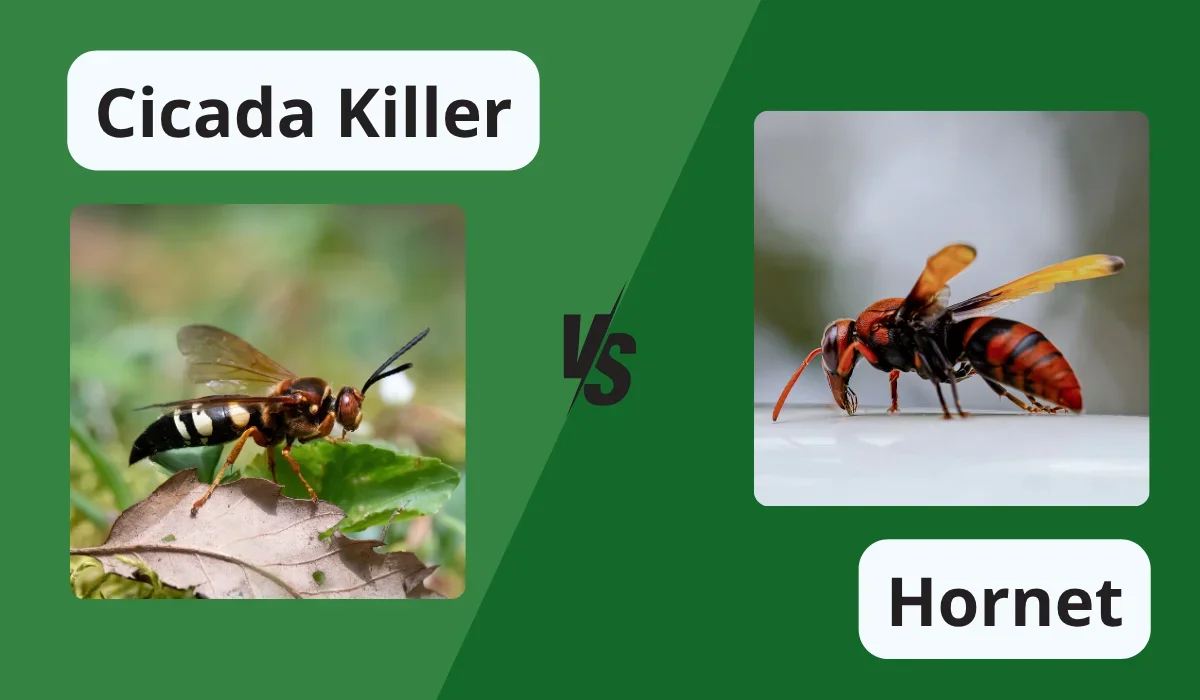
Feature
Cicada killer wasps are solitary ground nesters that typically live and work alone, while hornets and yellow jackets are social wasps that build colonies. This difference in behavior plays a big role in how threatening they appear.
Behavior
Cicada killers are generally calm and non-aggressive. Even the males, which often hover and dart around, do not have stingers and pose no real threat. Hornets and yellow jackets, on the other hand, are territorial and will aggressively defend their nests if they feel threatened.
Nest Type
Female cicada killers dig individual burrows in well-drained soil, often in flower beds, sidewalk cracks, or other exposed ground. Hornets and yellow jackets build large, papery nests that can be found in trees, under eaves, or inside wall voids.
Threat Level
Cicada killers are considered a low threat to people and pets. Their sting is mild and only used when directly provoked. Hornets and yellow jackets are high threats, especially in late summer, as their colonies grow larger and more defensive.
Common in Missouri
Both cicada killers and hornets are common throughout Missouri. Cicada killers are most often spotted in July and August, while hornet activity is highest toward the end of summer and early fall.
What to Do If You Have Cicada Killers in Your Yard
If the burrows aren’t bothering you, you can usually leave cicada killers alone. They help reduce cicada populations and will die off by late summer.
But if they’re digging in busy areas or becoming a nuisance, it’s worth reaching out to a pest control company. At Miller Pest & Termite, we’ve dealt with cicada killers all across Missouri. We can inspect your yard and provide safe solutions, no harsh materials, just targeted help.
Sometimes, cicada killers can show up in the same spot every summer, especially if conditions stay favorable. Repeated digging can weaken turf, loosen soil under sidewalks, and become an ongoing source of frustration. A professional team can not only remove existing activity but also help discourage future nesting with adjustments to soil, moisture levels, and maintenance habits. It’s about more than eliminating wasps; it’s about keeping your yard usable and safe for family, pets, and guests.
Final Thoughts
Cicada killer wasps look scary, but they’re more bark than bite. They’re part of Missouri’s ecosystem and help keep other insect populations in check. Still, they can be a nuisance when they dig up lawns or hover around patios.
If you’re seeing a bunch of them and want peace of mind, reach out. Our team knows how to handle cicada killers in a way that’s safe, effective, and tailored to Midwest homes.
Get Help Now!


